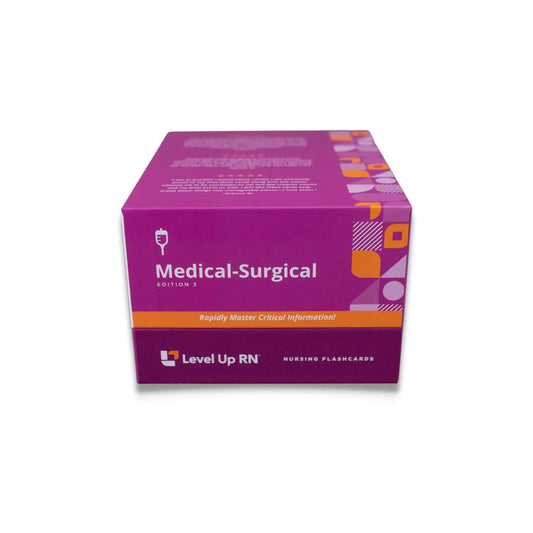Med-Surg - Integumentary System, part 9: Lyme Disease
Updated: Cathy ParkesLyme disease—the prevention, stages of lyme disease, symptoms of lyme disease, diagnosis and treatment.
Full Transcript: Med-Surg - Integumentary System, part 9: Lyme Disease
Full Transcript: Med-Surg - Integumentary System, part 9: Lyme Disease
Hi, I'm Cathy with Level Up RN. In this video, we will be talking about Lyme disease. So if you have our medical-surgical nursing flashcards, definitely pull them out so you can follow along with me. At the end of the video, I'm going to give you guys a little quiz to test your knowledge of some of the key points I'll be covering in this video, so definitely stay tuned for that. Lyme disease is a tick-transmitted bacterial infection that causes local inflammation and infection, but left untreated, it can spread to other organs in the body and cause systemic complications. In terms of prevention, wearing long sleeves, long pants, closed shoes, and a hat when going into grassy or wooded areas can help prevent Lyme disease. And then it's always important to check your body for ticks when returning inside.
There are three stages of Lyme disease. During the first stage, a ring-shaped bullseye lesion called erythema migrans is often, but not always, present. In addition, the patient may have flu-like symptoms such as fever, malaise, as well as muscle and joint pain. During stage two, which occurs about 3 to 12 weeks after the initial infection, the patient may have symptoms such as palpitations, arrhythmias, dyspnea, facial paralysis, as well as nerve pain and numbness. Then during stage three, which is late-stage Lyme disease, which can occur months or years after the initial infection, complications such as arthritis, cognitive impairment, and other neurological symptoms may be present. In terms of diagnosis, a positive ELISA test is indicative of Lyme disease and is confirmed with a western blot test. Treatment includes the administration of antibiotics, such as doxycycline, as well as analgesics such as NSAIDs.
All right, that is it for this brief video, and it's time for a quiz. I've got three questions for you. First question, what do you call the ring-shaped bullseye lesion that often, but not always, occurs in patients with Lyme disease? The answer is erythema migrans. Number two, flu-like symptoms are often present during which stage of Lyme disease? The answer is stage one. Question number three, how is Lyme disease treated? The answer is with antibiotics, such as doxycycline. Okay, that's it for this video. I hope it's been helpful. Take care, and thank you so much for watching.


